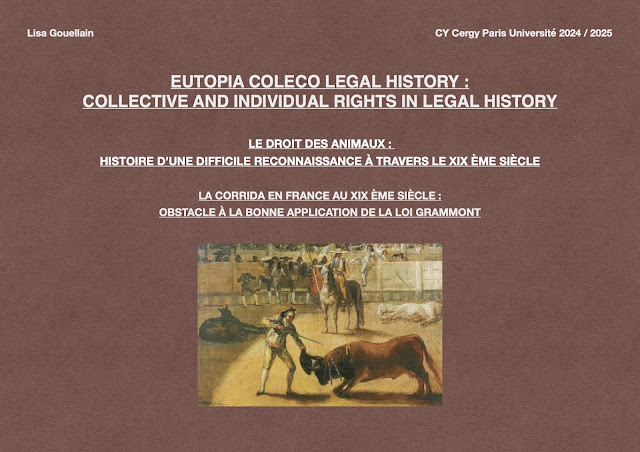This contribution examines animal rights in 19th-century France, beginning with the period of the Second Republic (1848–1850) and the enactment of the Grammont Act (Loi Grammont, 2 July 1850). Local traditions in southern France, notably bullfighting (corrida); resisted central legislative and regulatory initiatives - particularly under the Third Republic. This tension became more pronounced from 1885 onwards, when mayors were elected rather than appointed, enabling them to issue regulations that more directly reflected the preferences of their constituents.
By Lisa Gouellain (For the best experience, press ‘F11’ to enter full-screen mode, and click on the images to view them in a larger format.)







Thanks for sharing this great post Best divorce lawyer in pune
ReplyDelete